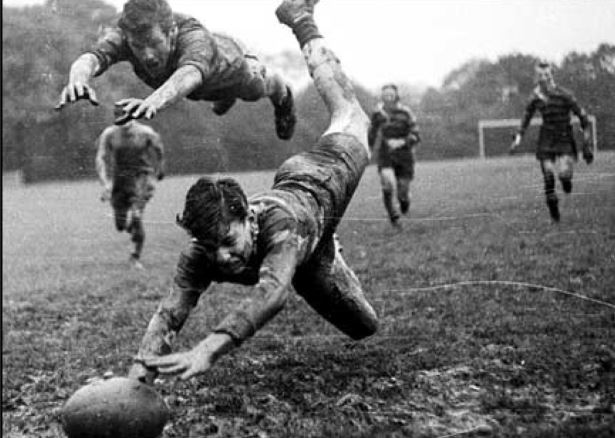The Rugby School, founded in 1567, played a crucial role in the development of rugby. In the early 19th century, football at Rugby School had distinctive features that later defined rugby.
Key Figures and Rule Development
Rules at Rugby School were traditionally determined by students rather than teachers, allowing for frequent modifications. These rules were first codified in 1845 by three students: William Delafield Arnold, W. W. Shirley, and Frederick Hutchins. This codification process marked a key moment in the formalization of rugby.
| Key Figure | Contribution |
|---|---|
| William Delafield Arnold | Was one of the key figures in writing the 1845 rules, establishing a structured approach to the game. |
| W. W. Shirley | Ensured the rules were comprehensive and practical for regular play at the school. |
| Frederick Hutchins | Documented and refined the rules, ensuring organized and playable games for future generations. |
| Thomas Arnold | As headmaster of Rugby School (1828-1842), he promoted physical education and the development of sports as an integral part of education. |
Broader Impact
The influence of Rugby School extended beyond its walls. Alumni carried the game’s rules and practices to universities and other institutions, leading to the spread of rugby. This dissemination played a crucial role in the sport’s growth and eventual establishment as a separate code from association football.
| Club | Year of Foundation | Contribution |
|---|---|---|
| Guy’s Hospital Football Club | 1843 | First and oldest “football club” in the world, formed by Rugby School alumni. |
| Dublin University Football Club | 1854 | Possibly the oldest football club in the world in any code. |
| Blackheath Football Club | 1858 | The oldest non-university/school rugby club. |
| Cheltenham College | 1844 | One of the oldest documented school clubs. |
| Sherborne School | 1846 | One of the oldest documented school clubs. |
| Durham School | 1850 | One of the oldest documented school clubs. |
| Francis Crombie and Alexander Crombie | 1854 | Introduced rugby to Scotland via Durham School. |
| St David’s College, Lampeter | 1850 | First rugby club in Wales, founded by Rowland Williams. |
Rules Used at Schools
English public schools developed various football rules, which later influenced the development of both rugby and association football. Some notable school rules include:
Eton College
Eton had its own set of rules, known as the “Eton Field Game” and the “Eton Wall Game”. The rules for the Eton Field Game were codified in 1815. These rules included:
- Playing Field: Divided into two halves with a halfway line.
- Objective: To pass the ball over the opponent’s goal line.
- Foot Play: Players could dribble and pass the ball with their feet.
- Wall: In the Eton Wall Game, the ball is played along a wall and goals are scored in designated areas.
Harrow School
Harrow developed its own game called “Harrow Football”. Some of its features included:
- Ball: Used a rounder and smaller ball.
- Short Passes: Short hand passes were allowed.
- Field: Field rules were stricter compared to other schools.
- Objective: The game involved carrying the ball past a designated line to score a goal.
Westminster School
At Westminster, football was played on the school’s green field, and some features included:
- Hand Play: Although the use of hands was allowed, foot play predominated.
- Playing Times: Football was primarily played on Thursdays and Saturdays as a recreational activity for students.
- Game Rules: Rules were determined by students and could vary according to pre-game agreements.
Charterhouse School
Charterhouse had a unique variant of football known as “The Charterhouse Rules”, which included:
- Playing Field: The field was surrounded by a ditch, and the ball could not go out of bounds.
- Hand Play: The use of hands was restricted to certain situations.
- Objective: Points were scored by carrying the ball past a designated line.
Winchester College
Winchester had its own rules known as “Winchester Football”. Its rules focused on:
- Foot Play: Emphasis was placed on playing with the feet.
- Team Formation: Teams were divided into “kickers” and “scrummers”.
- Contact Rules: Physical contact was limited compared to other versions.
- Objective: The goal was to carry the ball beyond the opponent’s goal line without using hands.
Rugby School
The rules of Rugby School, codified in 1845, had the following characteristics:
- Carrying the Ball: Players were allowed to carry the ball with their hands.
- Tackling: Opponents could be tackled and brought to the ground.
- Foot Play: The ball could be kicked in any direction.
- Scrums: Used to restart play after certain interruptions.
- Scoring a Goal: Achieved by carrying the ball beyond the goal line and placing it on the ground.
Legacy
The legacy of Rugby School in the development of rugby is commemorated with the naming of the Rugby World Cup trophy, the Webb Ellis Cup, in honor of the legendary figure associated with the origins of the game. While the contributions of figures like William Delafield Arnold, W. W. Shirley, Frederick Hutchins, and Thomas Arnold were crucial, the history surrounding the sport’s development is a collective effort of the Rugby School community.
The different rules used by the schools played an essential role in shaping modern rugby. Each school had its own variations of the game, contributing to the diversity and richness of the sport that eventually consolidated into the rules we know today.
